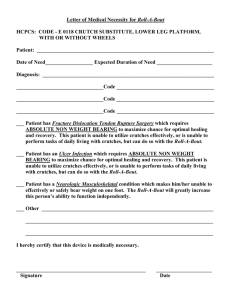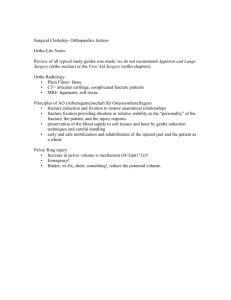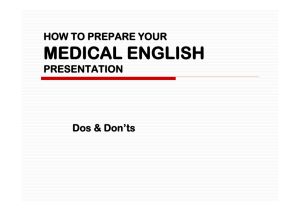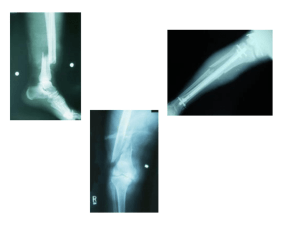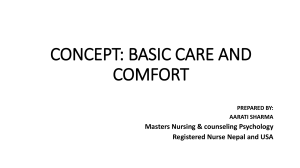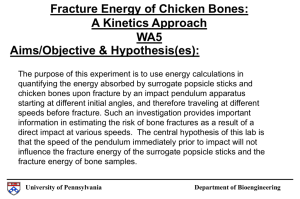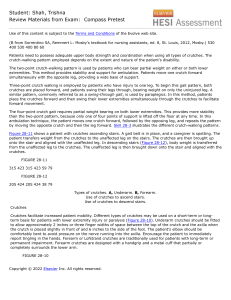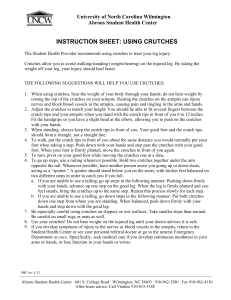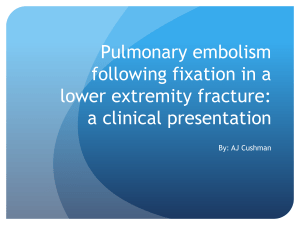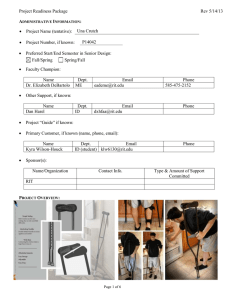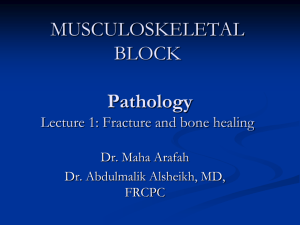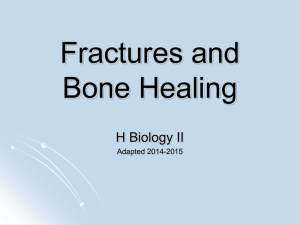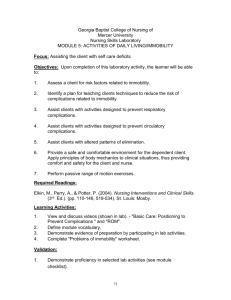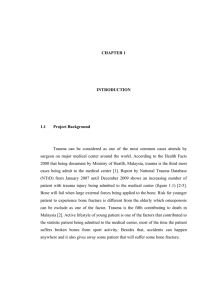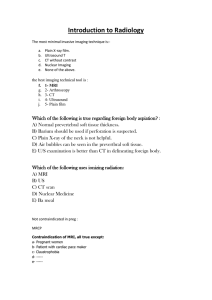MS questions
advertisement
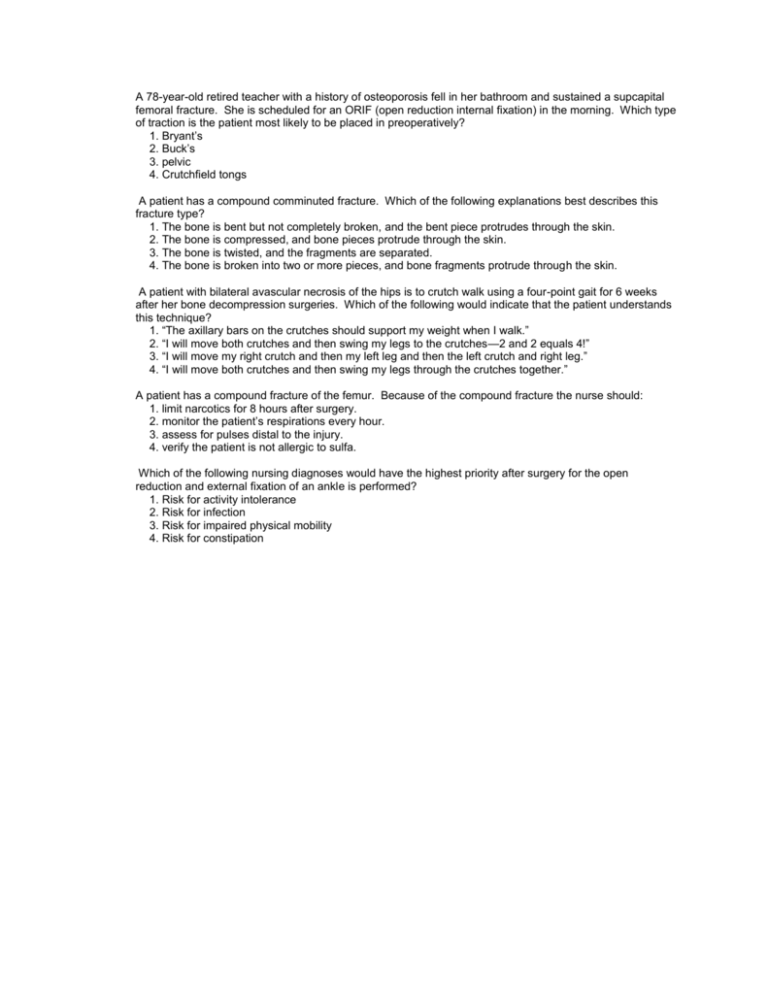
A 78-year-old retired teacher with a history of osteoporosis fell in her bathroom and sustained a supcapital femoral fracture. She is scheduled for an ORIF (open reduction internal fixation) in the morning. Which type of traction is the patient most likely to be placed in preoperatively? 1. Bryant’s 2. Buck’s 3. pelvic 4. Crutchfield tongs A patient has a compound comminuted fracture. Which of the following explanations best describes this fracture type? 1. The bone is bent but not completely broken, and the bent piece protrudes through the skin. 2. The bone is compressed, and bone pieces protrude through the skin. 3. The bone is twisted, and the fragments are separated. 4. The bone is broken into two or more pieces, and bone fragments protrude through the skin. A patient with bilateral avascular necrosis of the hips is to crutch walk using a four-point gait for 6 weeks after her bone decompression surgeries. Which of the following would indicate that the patient understands this technique? 1. “The axillary bars on the crutches should support my weight when I walk.” 2. “I will move both crutches and then swing my legs to the crutches—2 and 2 equals 4!” 3. “I will move my right crutch and then my left leg and then the left crutch and right leg.” 4. “I will move both crutches and then swing my legs through the crutches together.” A patient has a compound fracture of the femur. Because of the compound fracture the nurse should: 1. limit narcotics for 8 hours after surgery. 2. monitor the patient’s respirations every hour. 3. assess for pulses distal to the injury. 4. verify the patient is not allergic to sulfa. Which of the following nursing diagnoses would have the highest priority after surgery for the open reduction and external fixation of an ankle is performed? 1. Risk for activity intolerance 2. Risk for infection 3. Risk for impaired physical mobility 4. Risk for constipation



